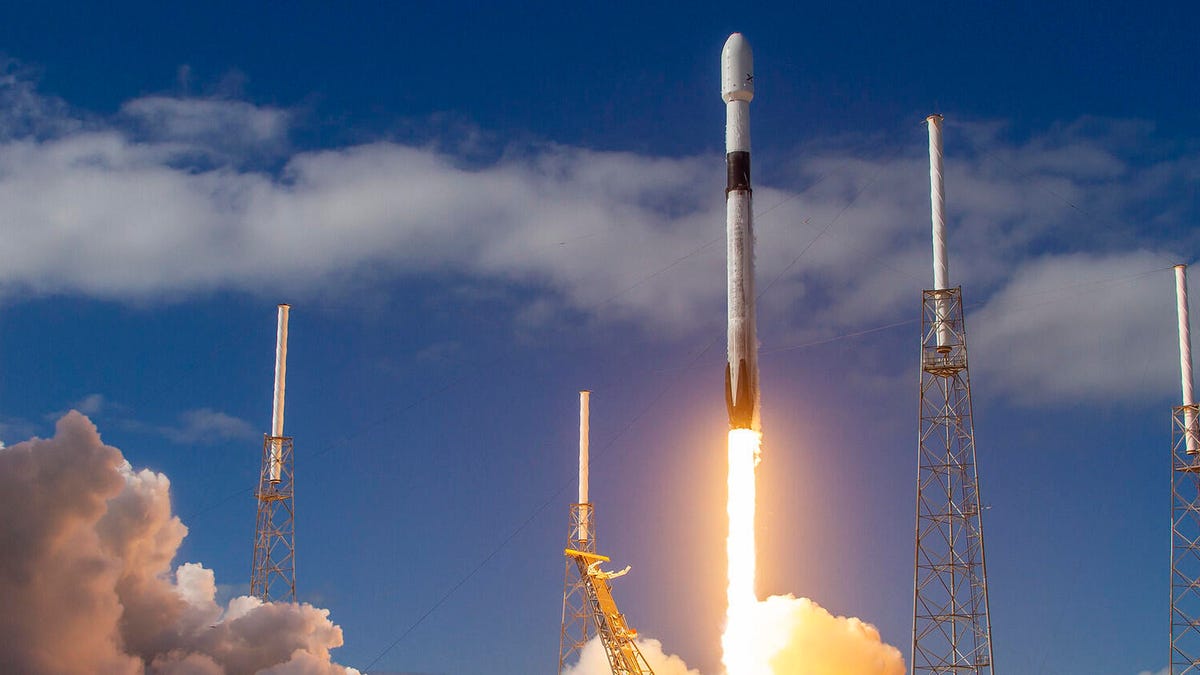SpaceX Starlink launch sets record for workhouse Falcon 9 rocket
Elon Musk proves to be the rocket-recycling king once again.

A Falcon 9 launch can typically carry about 60 Starlink satellites.
SpaceX launched the 16th batch of its Starlink broadband satellites from Cape Canaveral in Florida on Tuesday night, setting a record for its Falcon 9 rockets.
Boosting a new group of its orbiting routers has become a matter of routine for Elon Musk's rocket company as it works to build up a mega-constellation with thousands of the individual satellites in a low-Earth orbit. But this mission puts a new feather in Musk's cap.
The first stage of the Falcon 9 made its seventh flight and landing, which is a new milestone for rocket recycling for the company. The booster previously flew on four Starlink missions and a pair of larger telecom satellite launches.
SpaceX landed the booster on the droneship Of Course I Still Love You in the Atlantic shortly after launch and was also set to attempt to catch the two halves of the nose cone, or fairing, with another pair of ships. The fairing halves were also recycled, with one half making its second flight and the other its third.
Liftoff! pic.twitter.com/a9O2MqcsCV
— SpaceX (@SpaceX) November 25, 2020
This mission -- the company's 23rd mission of 2020 -- comes just a few days after SpaceX sent a new NASA and European Space Agency satellite to orbit.
On Saturday morning, another Falcon 9 blasted off from Vandenburg Air Force Base in California carrying the new NASA/European Space Agency Sentinel 6 Michael Freilich satellite designed to monitor global sea level rise and to improve weather forecasting.
Originally, the Starlink launch was set to take place just 10 hours after liftoff of the Sentinel 6 mission but was pushed back a couple of days due to technical and weather issues.
SpaceX is chasing its first thousand Starlink satellites in low-Earth orbit as it works to expand its public beta test, currently being offered to a limited number of customers in Canada and the northern US.
You can re-watch the whole thing here:

